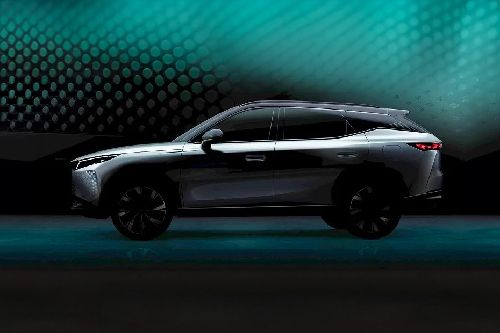Everything about your car's batteries

A car battery is used to supply electric current to the vehicle's starter motor and other accessories, such as lights and air-conditioning.
KEY TAKEAWAYS
How long does a car battery last?
A typical lead-acid battery has a life expectancy of two to five years.Where are car batteries located in a car?
Depending on the vehicle model, the car battery is located in the engine compartment or underneath the rear cargo area.Similar to other household appliances, car batteries are powered by a chemical reaction that is converted into electrical energy by your car's starter motor and alternator. The type used in automobiles can sustain numerous charges and discharge cycles and can keep a charger for longer periods of time, setting them apart from ordinary batteries.
Depending on the vehicle model, the car battery is located in the engine compartment or underneath the rear cargo area. The battery is attached to two terminals, and through these terminals the battery supplies its energy to the rest of the vehicle.
How to choose the right battery for your vehicle
Car battery sizes
The batteries that come with the vehicles now on the market must meet particular requirements. Some vehicles require a unique battery, such as those with a start-stop system, while others have their battery connections turned around.
Looking at the old battery or the battery tray is one technique to determine your car’s battery size. The measurements can be used as a reference when buying a replacement battery. The dimensions of a battery are frequently listed by manufacturers on their website as a buyer's reference. You can refer to that when choosing your new unit.
Your car’s owner's manual can tell you the correct car battery size. If you don't have access to your owner's handbook, you can conduct research online using the websites of the battery manufacturers, which provide charts and filters to assist you determine which battery fits in your car.
Car battery brand
Given the variety of options on the market, choosing the right brand for your car batteries can be challenging. The brand that came with your car should be preferred, but if that’s not an option in your area, be sure the battery you purchase meets the requirements listed in your owner's manual.
While it could be alluring to purchase the least expensive product available, we strongly advise against it. What you give up in terms of quality, you give up in terms of pricing. Cheaper batteries frequently perform worse over time and don't last as long as comparable high-quality alternatives.
Car battery age
Always examine the age of the battery you're purchasing when buying a new one for your car. In general, newer batteries perform and last longer than older ones. Before making a purchase, make sure to check the car battery's manufacturing date. We strongly advise searching for a newer unit if the unit you’re looking at is more than six months old.
How to extend the life of a car battery
The battery in your car is crucial for keeping it running. The battery powers virtually every electronic component, including your starter. A typical lead-acid battery has a life expectancy of two to five years.
While running a car's engine already generates heat, a hot sunny day might add to the scorching temperature that could adversely impair your car battery's lifespan and health. The hot weather is one of those major elements affecting its longevity.
Even so, by taking the extra care listed in this guide to automobile battery maintenance, you can increase the lifespan of your battery.
Secure the car battery
To begin with, the battery in your automobile needs to be securely fastened to minimize vibration, which might potentially harm its internal components and result in short circuits. Have your battery terminals checked on a regular basis, especially if your automobile has traveled through rugged or uneven terrain.
Check battery terminals for corrosion
Clean your car battery terminals to stop corrosion. This is actually an additional method of extending battery life. To do so, clean the terminals with a toothbrush immersed in a solution of baking soda and water. You must then thoroughly rinse it with cold water to remove the combination. Use a little spray bottle instead of a hose.
Monitor car battery voltage
A car battery tester should always be kept in your vehicle. The tester measures the voltage of the battery when it is linked to the battery terminal.
To accurately monitor the condition of your battery, you must occasionally check the output voltage level. The voltage figures may also indicate when it's time to replace the device. When the automobile is off, typical batteries will have voltages between 12.4 and 12.9 volts.
Avoid using car electronics while the engine is off
One of the most frequent errors made by car owners may be this one. It's not a good idea to switch to accessory mode and turn on any of the vehicle's electronics when the engine is off, because doing so could drain the battery. In addition, given enough time, prolonged periods of idling could reduce the lifespan of your battery.
Switch off car headlights
Before exiting the car, make sure you’ve switched off the headlights, because not all vehicles have an automatic on and off feature for their lighting system.
Some have an audible or visual alert that lets you know your lights are still on, but in cars without such cutting-edge technologies, it's essential to be cautious. Headlights left turned on for hours can severely drain the car battery.
Drive your car
Make sure to start and drive your car frequently because if it isn't used, the battery charge can be depleted over time.
Aside from car battery chargers, batteries also get their energy from the alternator whose energy comes from the engine. In essence, the more frequently the engine revs, more energy is sent to the battery as long as it is in good condition.
When to replace the car battery
Regardless of usage, car batteries do inevitably degrade over time. An automobile will often run through several batteries over the course of several years. Here are some signs that your car battery is due for replacement.
Car fails or has difficulty in starting
A discharged battery can usually be remedied via a quick jump from another car or a battery jump kit. If your car still won't start after doing so, you may want to think about ordering a new cell. Simply said, this indicates that your battery will no longer maintain a charge.
If your starter requires effort to crank, that is something else to take into account. Yes, this can indicate that your starter is subpar, but that isn't usually the case. You could need a new battery if you turn on your car but it takes a while before you hear the engine revving and turning over.
Damaged battery or below voltage level
Lead and acid, two dangerous materials that, when combined properly, can store an electrical charge, make up car batteries. These automobile batteries' cases, however, are susceptible to damage from unfavorable weather conditions as well as improper handling.
When you physically inspect the device and notice the battery's misshaped housing or battery acid spilling out, the battery has to be replaced. If this is the case, replace the cell right away because a damaged battery might cause significant harm.
Likewise, a battery whose volts have dropped down below 12.4 and 12.9 volts needs to be disposed of.
How to jump-start a car
Provided that the car battery can still hold a charge, another battery from a different vehicle can share its charge through the classic jump-start procedure using jump cables. These cables allow the batteries to be connected to one another. Here’s how it's done.
- Place the vehicle you'll be using for a jumpstart next to the vehicle with a dead battery, close enough for the cables to reach. The cars shouldn't be in contact with one another.
- Switch off the engines of both vehicles.
- Clamp the positive cable's first end to the positive clamp on the dead battery.
- Now have someone attach the other end of that cable to the positive clamp of the other battery.
- Next, attach the negative cable to the good battery's negative terminal.
- The other end of the negative line should then be connected to a ground on the car that has the dead battery. The engine block or similar metal surface far from the battery can serve as this.
- While doing this, take care not to touch the cable's two ends together.
- Start the emergency vehicle that is supplying the electricity.
- With the weak battery, start the vehicle. Check your connections and tighten or clean them as necessary if it won't start.
- If the problem vehicle does manage to start, let it run for at least 20 minutes to give the battery time to recharge before turning it off.
- If it still won't start, there might be an additional issue. For assistance, dial a nearby service station.
Photos from Ford Philippines, Prestone Philippines, and Dylan Afuang
- KEY TAKEAWAYS
- How to choose the right battery for your vehicle
- Car battery sizes
- Car battery brand
- Car battery age
- How to extend the life of a car battery
- Secure the car battery
- Check battery terminals for corrosion
- Monitor car battery voltage
- Avoid using car electronics while the engine is off
- Switch off car headlights
- Drive your car
- When to replace the car battery
- Car fails or has difficulty in starting
- Damaged battery or below voltage level
- How to jump-start a car
Sell your car at the best price
 Verified and genuine buyers
Verified and genuine buyers
PIMS 2024
Trending & Fresh Updates
- Latest
- Popular
You might also be interested in
- News
- Featured Stories
Featured Cars
- Latest
- Upcoming
- Popular
Latest Car Videos on Zigwheels

Car Articles From Carmudi
- journal
- advice
- financing
- insurance

















































































